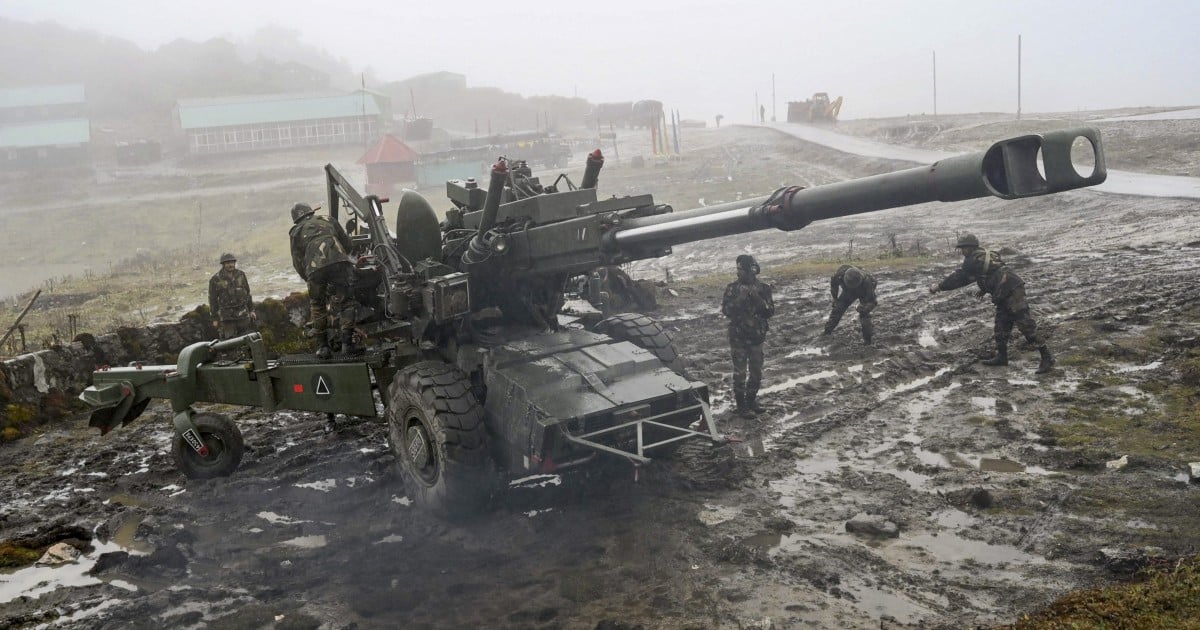China is planning to upgrade two Tibetan towns along the disputed border with India to city status, in a move that may help consolidate its hold over the region but risks further inflaming tensions.
The announcement, which one analyst said amounted to an assertion of its sovereignty, follows a row this week with India after the Chinese authorities published a map of newly “standardised” place names that included Indian-held territory south of the Line of Actual Control (LAC).
Indian troops in the Tawang sector, scene of a skirmish late last year, near the Line of Actual Control. Photo: AFP
China is planning to upgrade two Tibetan towns along the disputed border with India to city status, in a move that may help consolidate its hold over the region but risks further inflaming tensions.
The announcement, which one analyst said amounted to an assertion of its sovereignty, follows a row this week with India after the Chinese authorities published a map of newly “standardised” place names that included Indian-held territory south of the Line of Actual Control (LAC).
The two sides have never been able to agree on where their borders lie, and both sides claim sizeable territories on the other side of the Line of Actual Control. Graphic: SCMP
China and India have never agreed on their border demarcation and since a short but bloody war over the issue in 1962 they have been divided by the 3,200km (1,990-mile) LAC – although they have not even been able to agree on precisely where that lies.
The territory at the heart of the latest dispute is claimed by China as Southern Tibet, but is held by India as the state of Arunachal Pradesh.
In December last year, troops from both sides clashed in the Tawang sector, leaving dozens with what the Indian army described as “minor injuries”.
The two sides have also been involved in a prolonged stand-off thousands of kilometres to the west along another section of the LAC, where both hold territory claimed by the other. This section was the scene of the deadliest clash for years between the two sides in the Galwan valley in Ladakh in June 2020.
On Monday the authorities in Tibet said two counties along the eastern section of the LAC – Milin and Cuona – would be upgraded to city states and taken under the direct administration of the regional government.
Both areas have populations of less than 25,000 but Milin – also known as Mainling – is an important border town and transport hub whose territory covers 180km (115 miles) of the Indian frontier.
It is linked by rail to the regional capital Lhasa and lies along a highway linking Tibet and Xinjiang, as well as having its own airport.
Cuona, also known as Cona or Tsona, borders Bhutan to the southwest and lies across the LAC from the Tawang sector. Part of the territory China claims as part of the new city is currently controlled by India.
No further details of the changes were given but under China’s administrative system, such an upgrade usually sees more resources being allocated to local development and the local authorities being given more powers.
Liu Zongyi, a senior fellow with the Shanghai Institutes for International Studies, said the upgrade may help Beijing further strengthen its control over the region, particularly in Cuona.
“By upgrading the administrative status, China has strengthened control by asserting its sovereignty and reinforcing governance of the two areas,” Liu said. “There will be more resources invested in the regions.”
Monday’s announcement of their new city status was issued a day after the Ministry of Civil Affairs in Beijing said it had “standardised” the names of 11 places, including five mountains, in the region and published a map that included Indian-held Arunachal Pradesh as part of southern Tibet to announce the changes.
On Tuesday, Indian foreign ministry spokesperson Arindam Bagchi said that his country rejected the renaming plan “outright”.
“This is not the first time China has made such an attempt,” Bagchi said in response to media inquiries.
“Arunachal Pradesh is, has been, and will always be an integral and inalienable part of India. Attempts to assign invented names will not alter this reality.”
Hours later in Beijing, Chinese foreign ministry’s spokesman Mao Ning said the name changes were “completely within the scope of China’s sovereignty”.
“The southern Tibet region is Chinese territory,” Mao told reporters in Beijing.
Since the border stand-off started in the western sector in 2020, both Beijing and New Delhi have steadily stepped up infrastructure investment along the frontier.
In February, the Indian government approved a “vibrant villages programme”, which is looking to develop the villages in 46 border areas over four states, including Arunachal Pradesh.
According to the Ministry of Home Affairs, the scheme will be given 48 billion rupees (US$584 million) in funding, just over half of which will be spent on road building.

